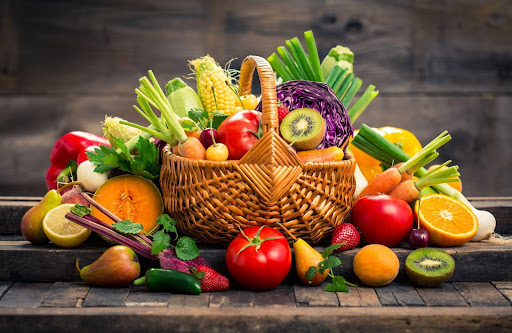When shopping for fresh fruits and vegetables , there are a few critical criteria to remember. To ensure you get the best quality produce, you should choose fruits and vegetables with good colour and firmness, no bruises or cuts, are ripe but not overripe, and are without any signs of decay.
The most important factor when selecting fresh fruit and vegetable delivery is colour. For example, depending on their variety, apples should be vibrant green or red. Bananas should have an even yellow colour with no brown spots, while oranges should be bright orange with no discolouration. In addition to general colour guidelines, each fruit or vegetable has unique colour requirements. For instance, avocados should remain greenish, and tomatoes should be deep red all around. Specific produce change colours as they ripen – like bananas and peaches – so paying attention to the colour before purchasing them is essential.
Another criterion for selecting fresh fruits and vegetables is firmness. All fruits and vegetables you buy should feel firm when touched, indicating that the produce is still fresh. Vegetables such as potatoes, bell peppers, cucumbers, etc., should have some flexibility when squeezed but not too much; if they feel squishy, they are probably past their prime. Fruits like apples and pears generally give slightly under pressure but should spring back up once released; if they stay depressed, the fruit isn’t fresh anymore. Additionally, produce such as oranges and grapefruits shouldn’t have any soft spots or splits in their skin which may indicate spoilage inside the fruit.
In addition to checking for good colour and firmness before purchasing produce items, it’s also essential to look for any bruises or cuts on the surface of each piece of fruit or vegetable – these can spread bacteria throughout other parts of the item quickly, so it’s best not to buy those at all! Lastly, ensure that none of the fruits or veggies shows signs of decay, such as mouldy spots or wilted leaves/stems – these indicate that items may be unsafe to consume due to being too old or exposed to moisture frequently while sitting in display cases at stores.
When choosing ripe fruits from trees like cherries or pears, it’s best not to select those that are overly ripe since these will likely be more tender than usual due to having less sugar content than average which can cause them to spoil faster after purchase; instead try picking ones that are slightly firmer yet still yield slightly under pressure as these will stay fresher longer! Also, make sure there aren’t any bugs on either side of whatever you’re looking at since these could transfer disease into your home from store shelves – gross!
Overall, when buying fresh fruits and vegetables, it is always important to remember what criteria you need to look out for: good colour (specifically related to type), firmness (not too soft nor too hard), free from bruises/cuts/signs of decay/bugs/etc., ripe but not overripe (especially if selecting from a tree). By keeping this in mind during your next grocery trip, you’ll ensure your cart is complete with high-quality produce ready for consumption!
